Gujarati Wedding Ceremonies explained
Welcome to photosbyKISHEN, where we specialize in capturing the cultural splendour of Gujarati wedding ceremonies. Our expert team of Gujarati Wedding Photographers takes immense pride in preserving the vibrant traditions, intricate rituals, and heartfelt moments that make Gujarati weddings truly special. In this article, we embark on a visual journey, delving deep into the customs, rituals, and vibrant traditions that make these celebrations extraordinary. Join us as we explore the rich heritage of Gujarati weddings, showcasing captivating photographs and shedding light on the significance of each ceremony.
Gujarati wedding are renowned for their rich traditions, vibrant celebrations, and intricate ceremonies. Each ritual holds deep cultural significance, symbolizing the union of two families and the beginning of a new chapter in the lives of the bride and groom. Join us on a captivating journey as we explore the enchanting world of Hindu wedding ceremonies, delving into the customs, rituals, and vibrant traditions that make these celebrations truly extraordinary.

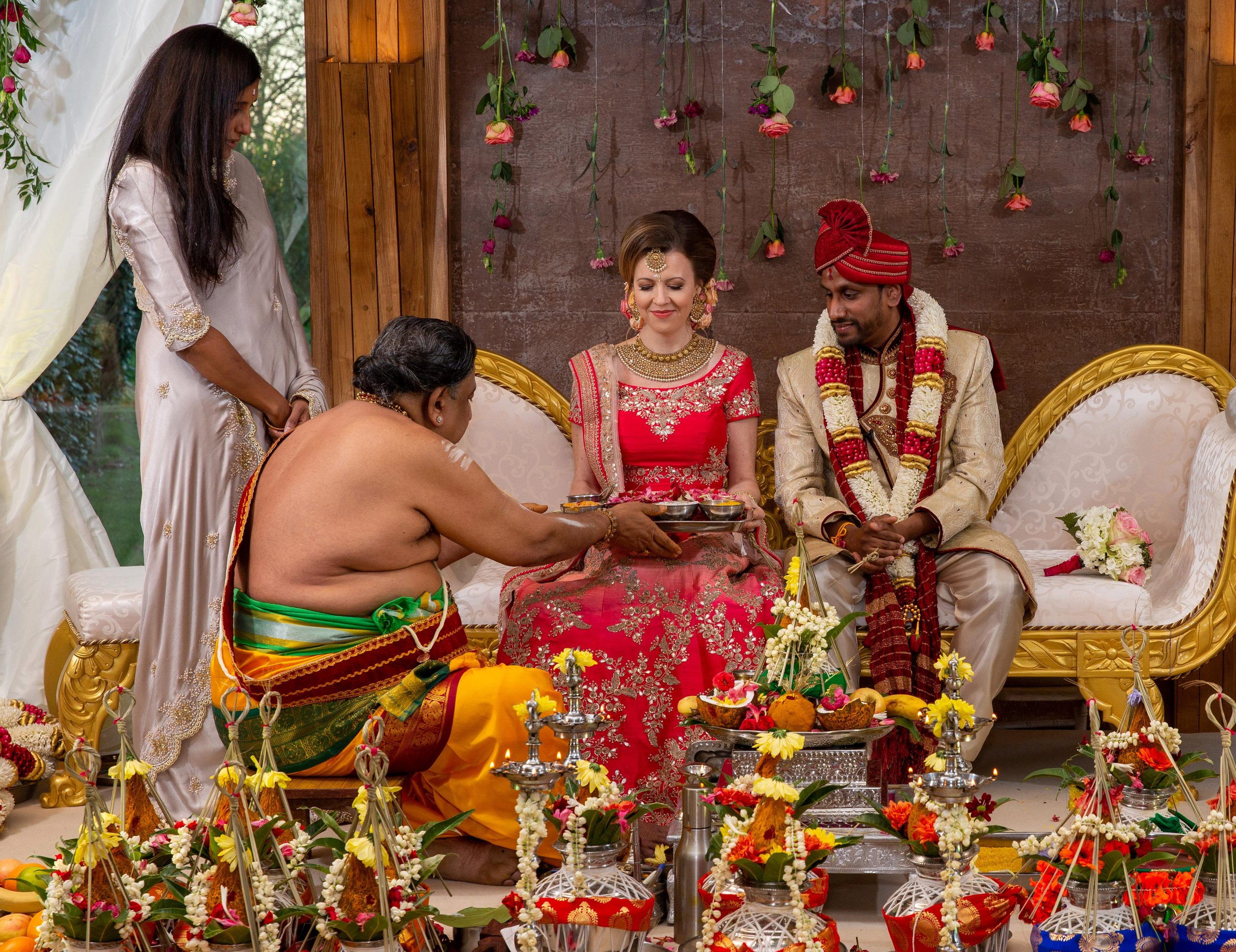


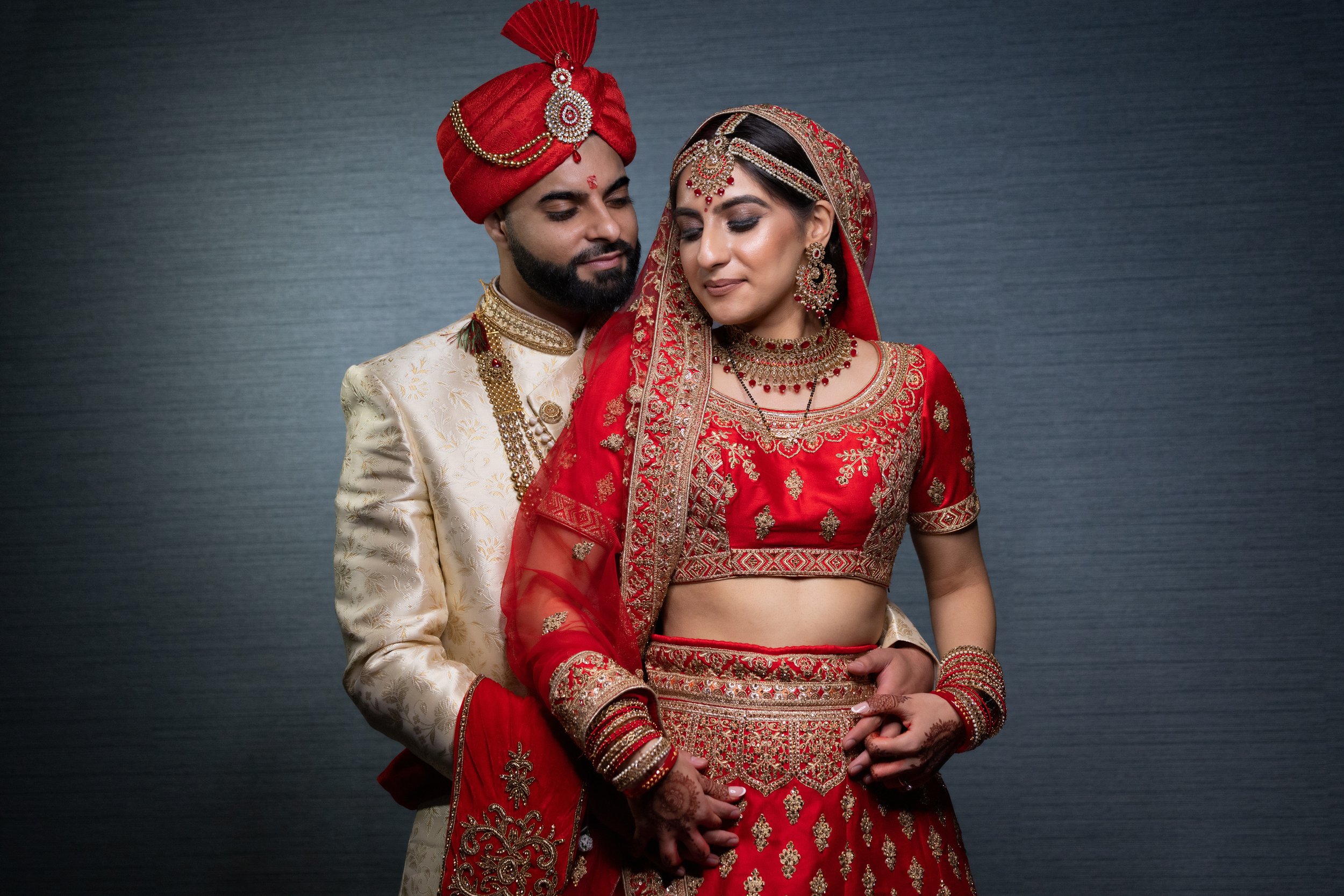
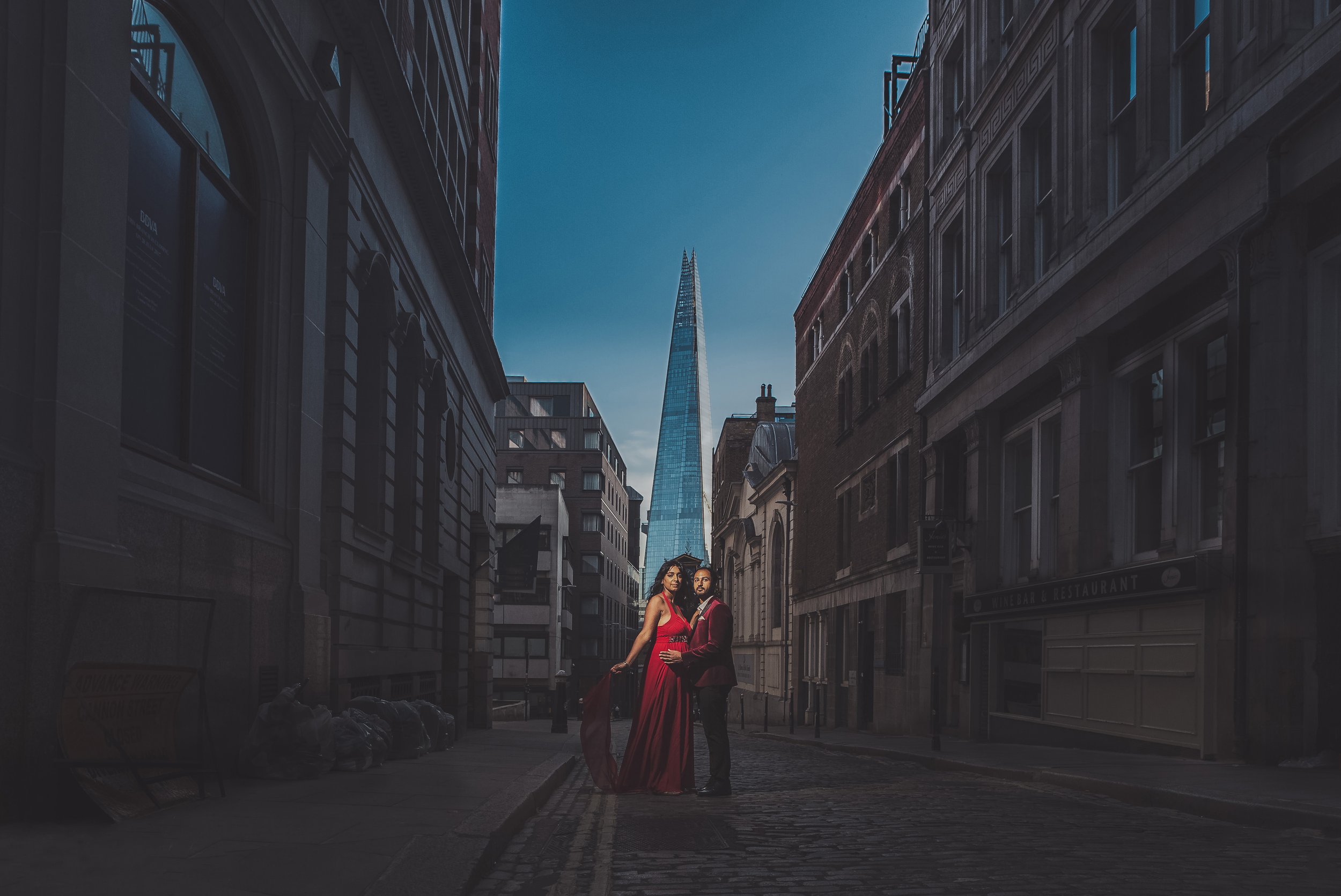


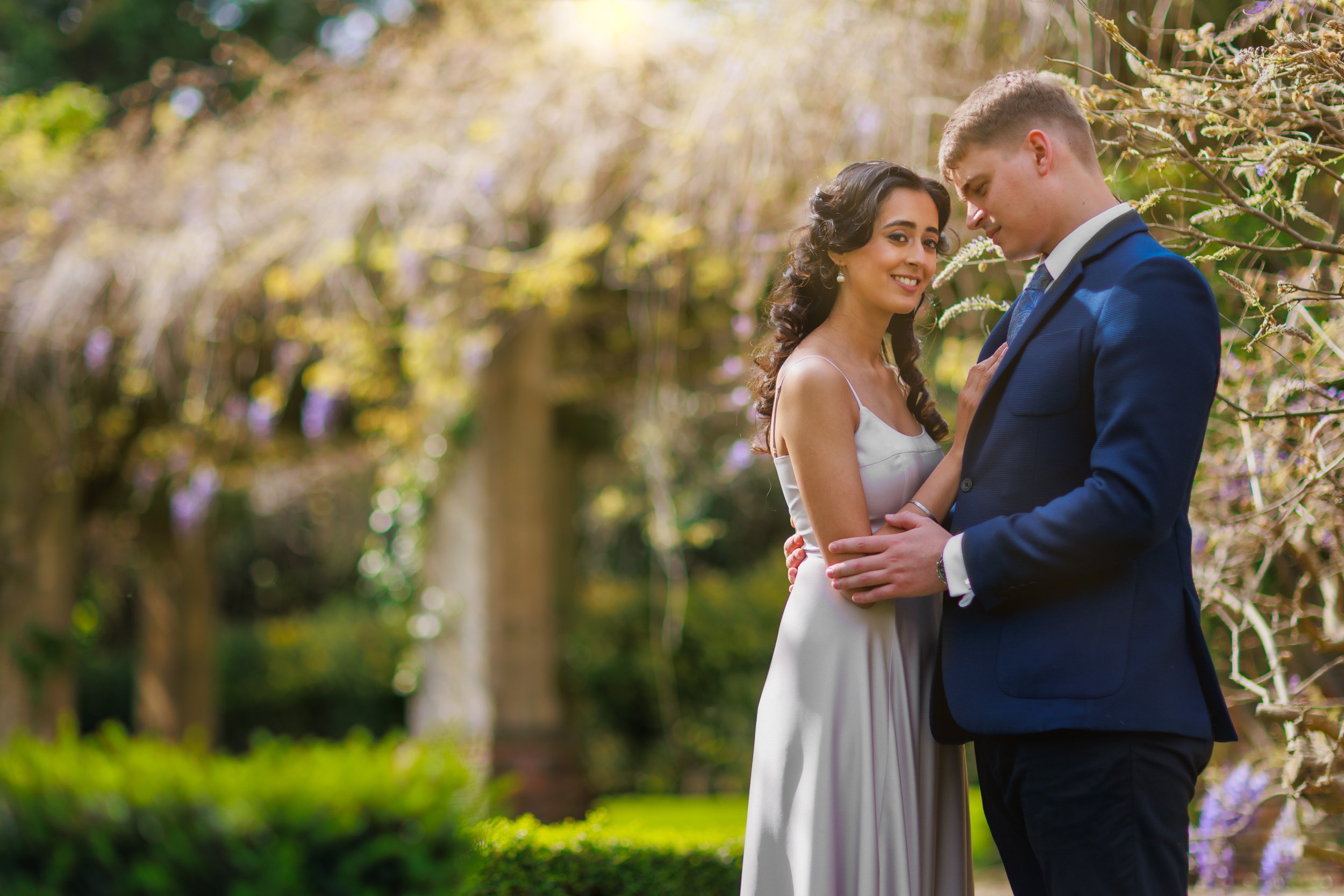
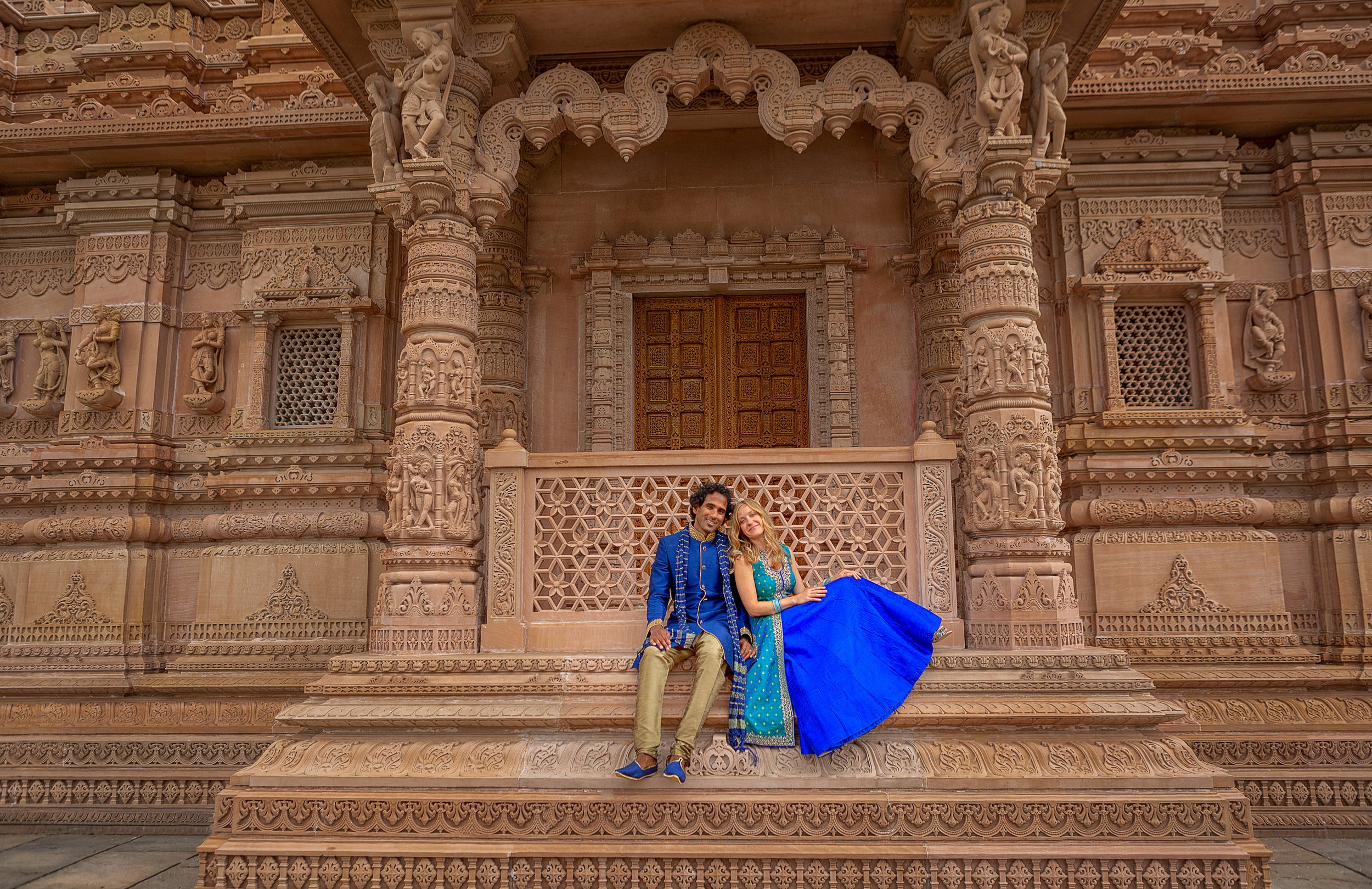


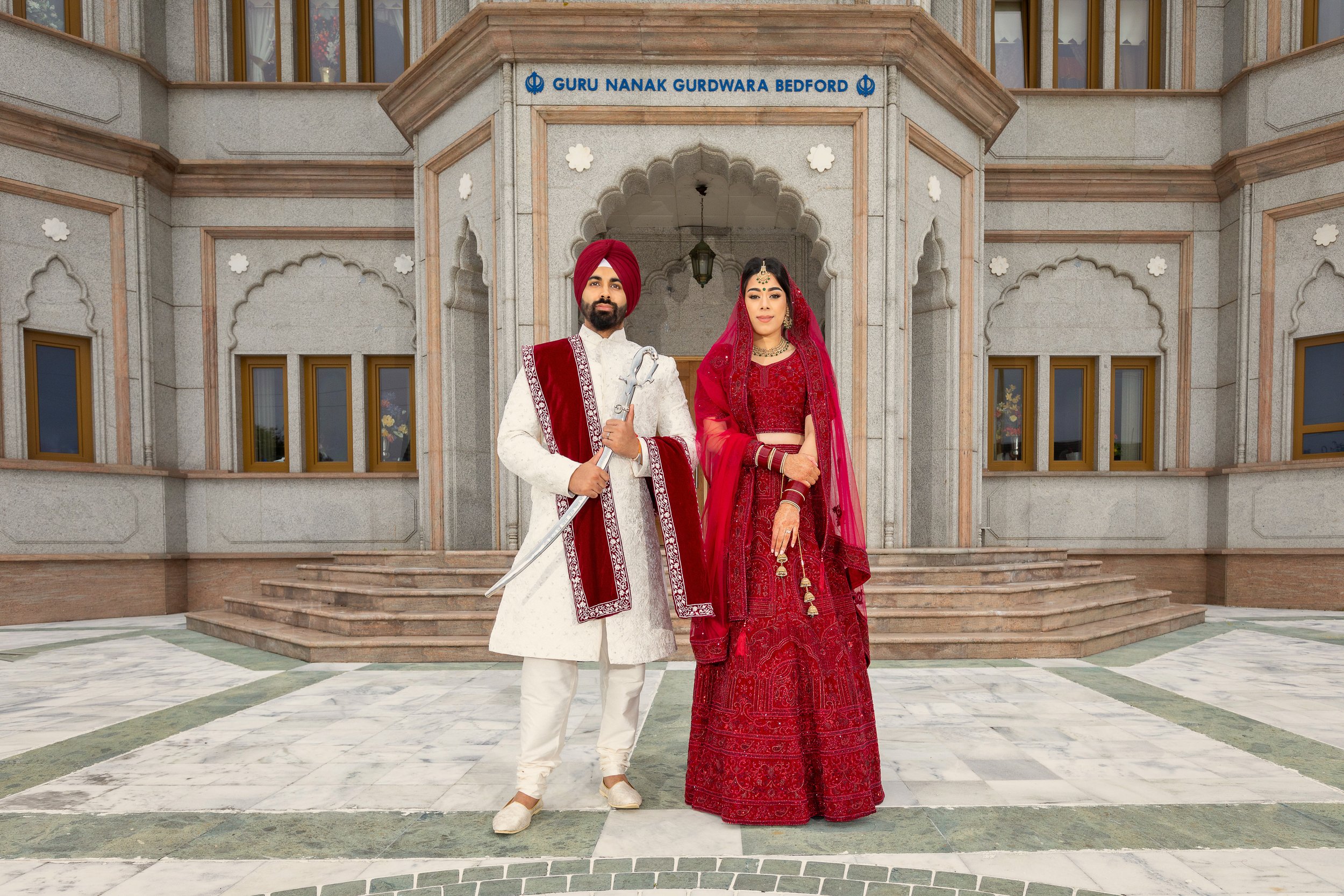
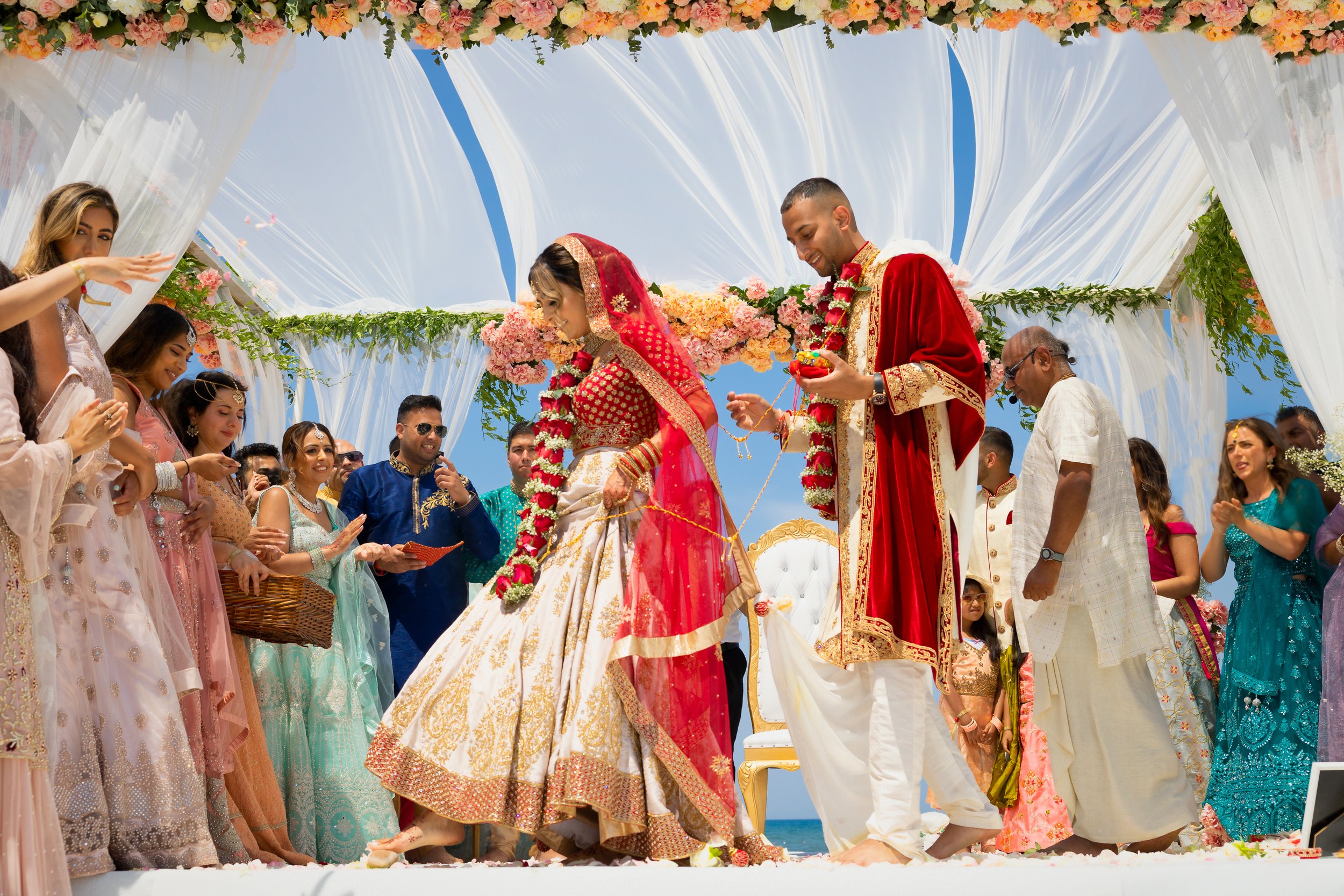
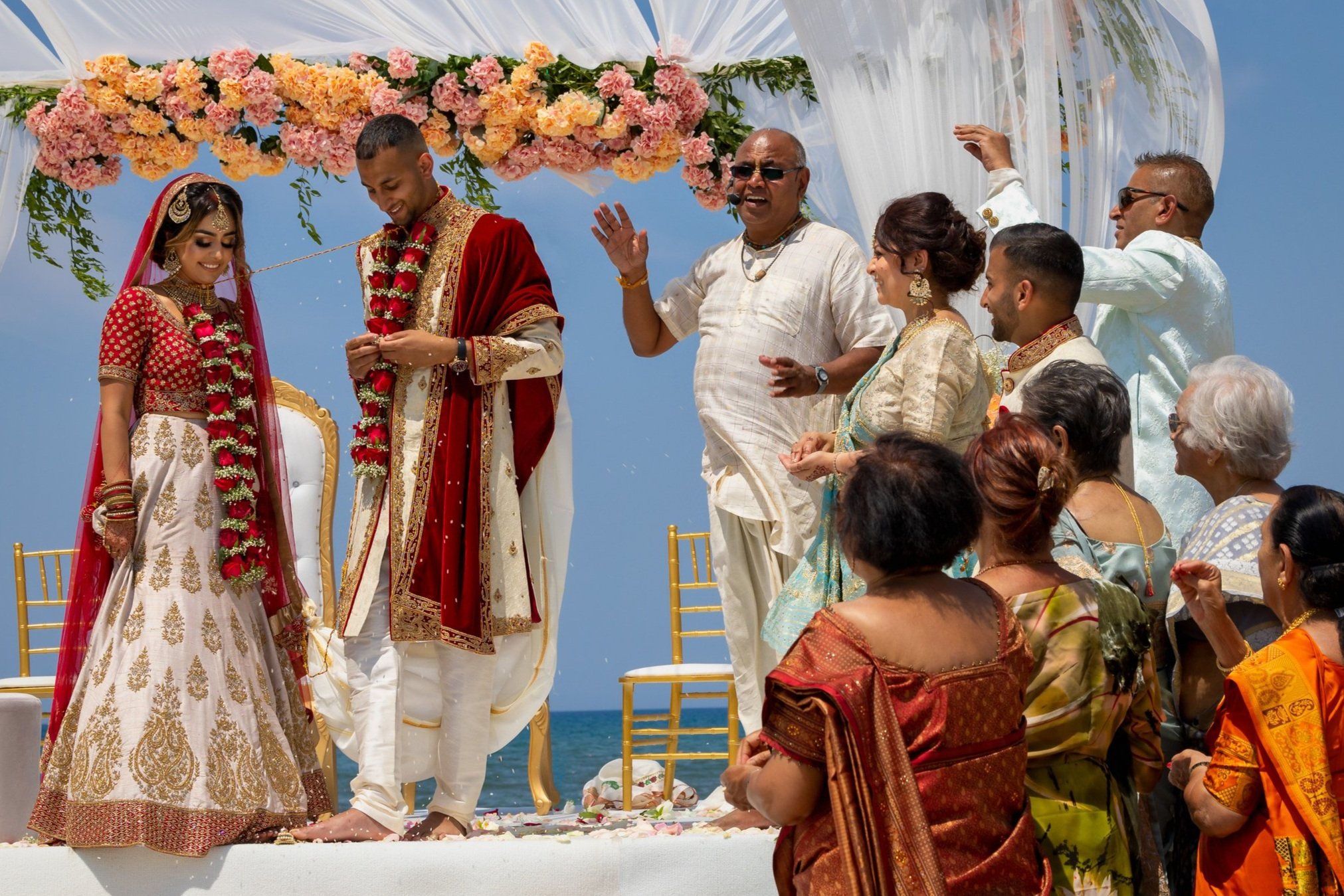

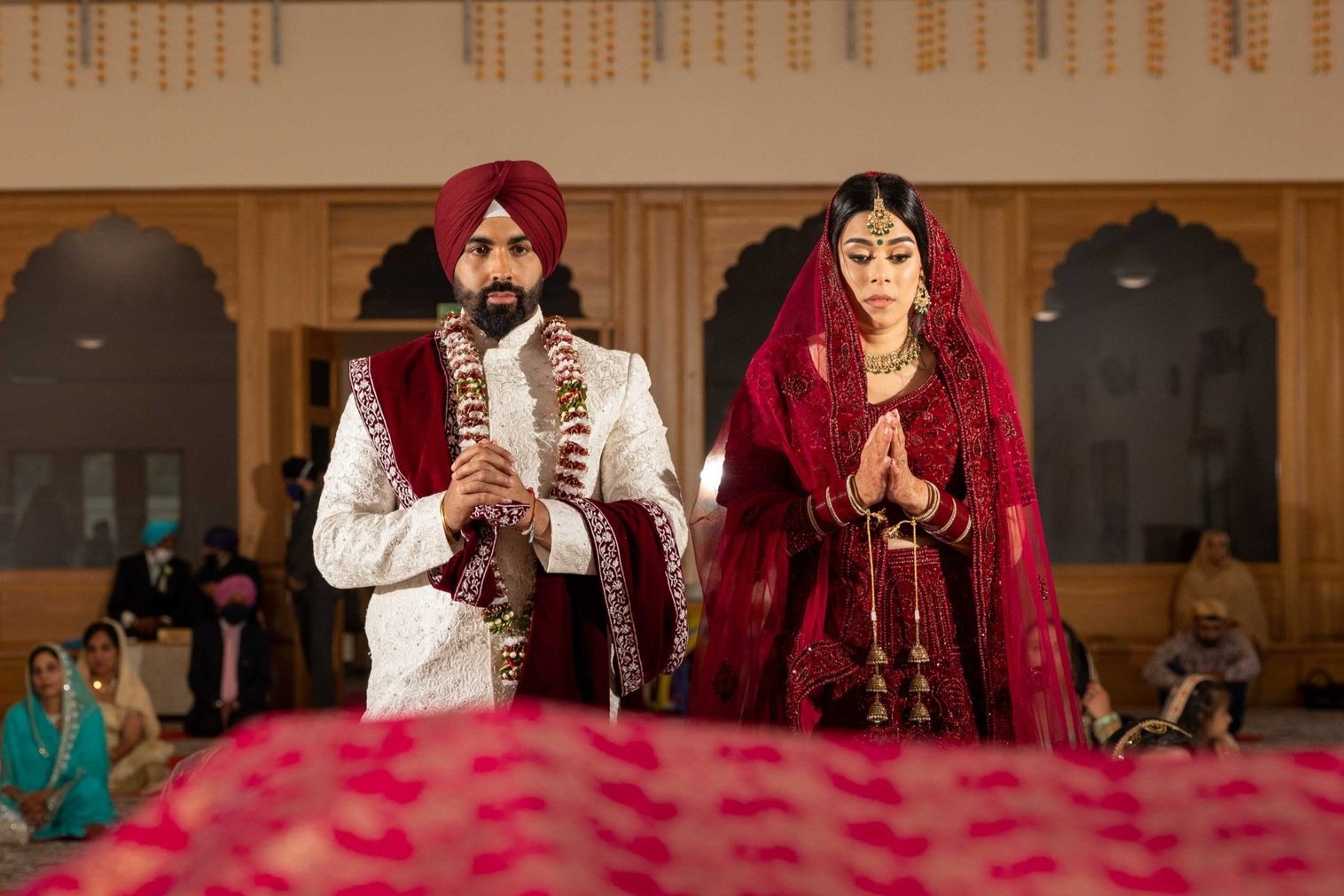


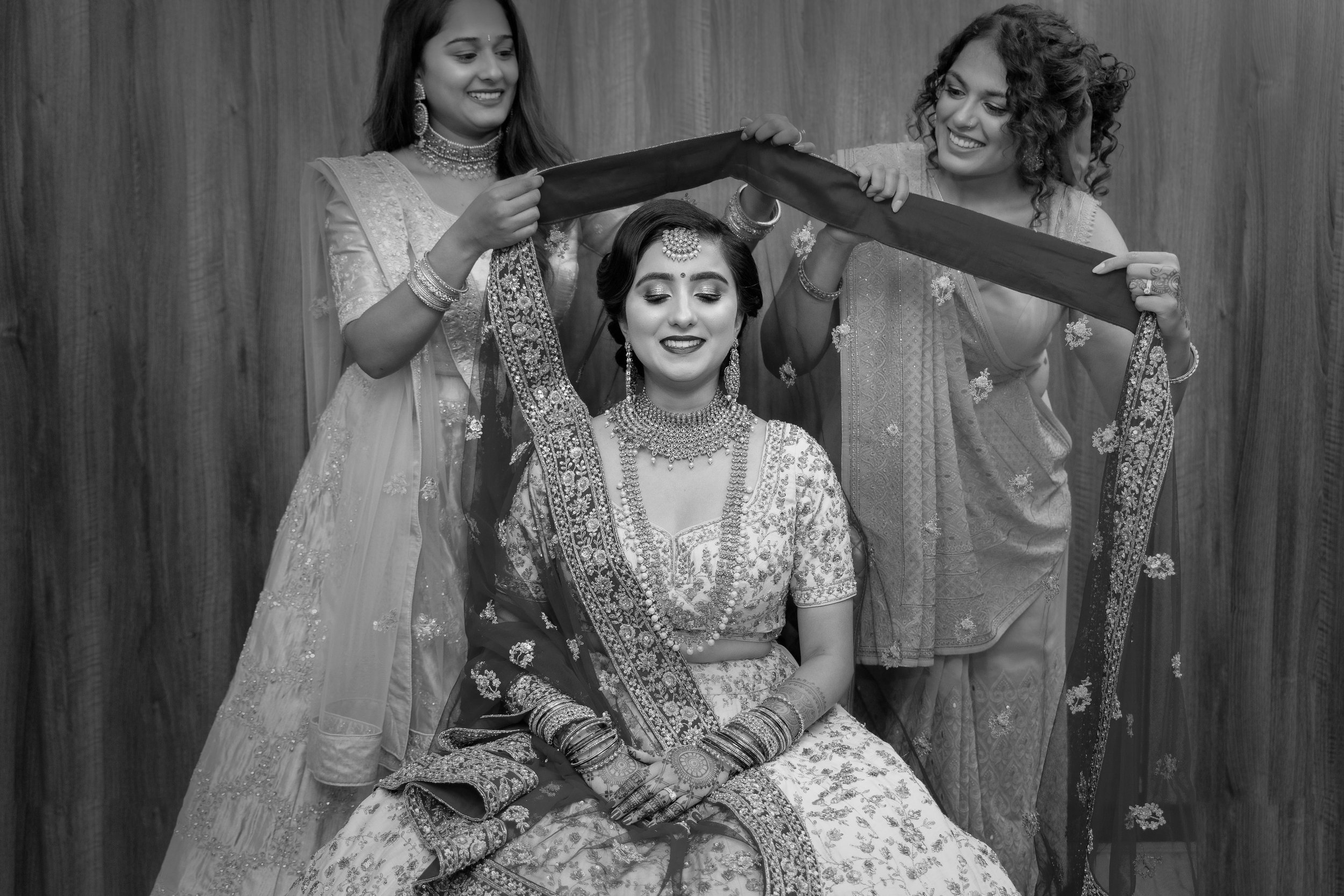
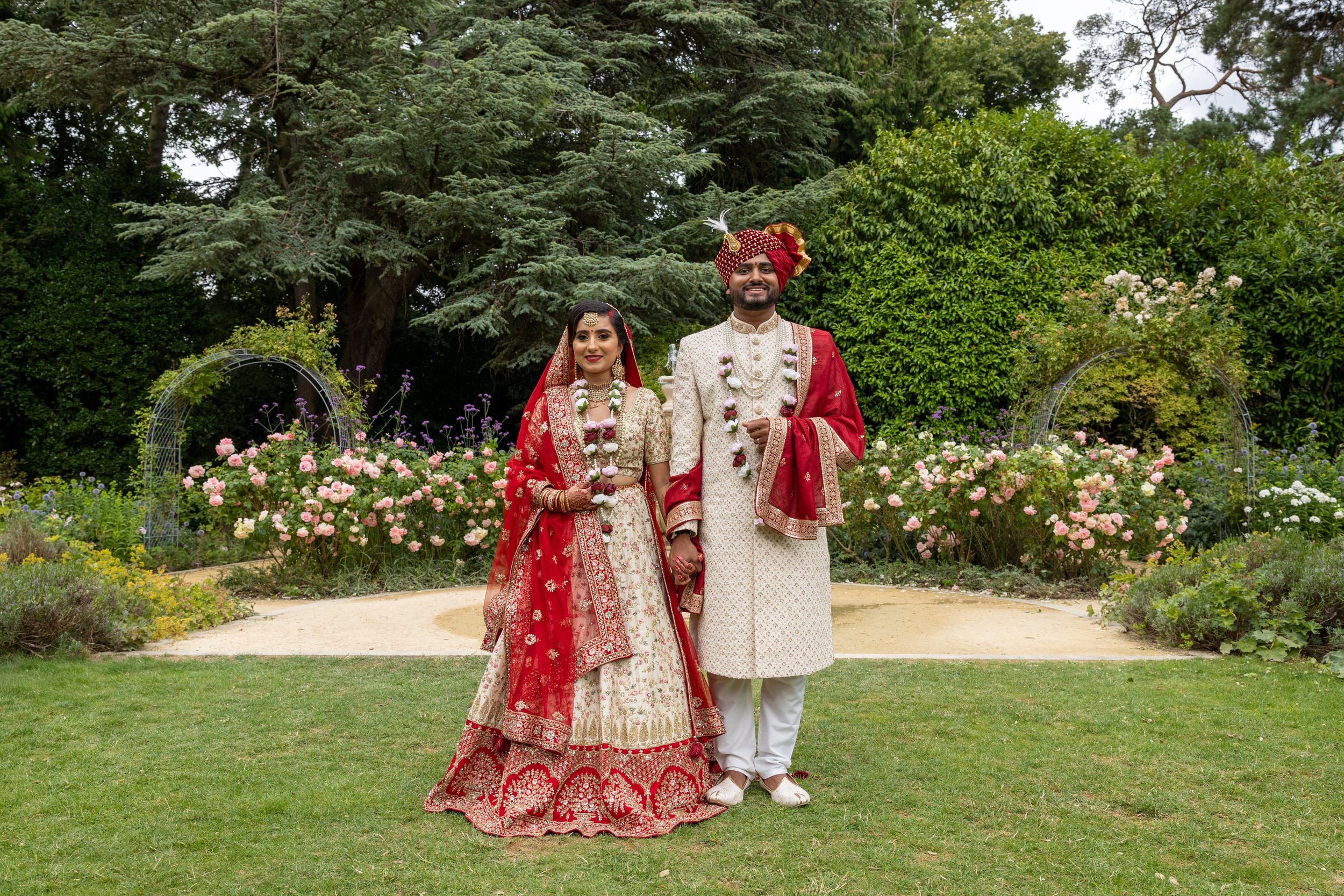
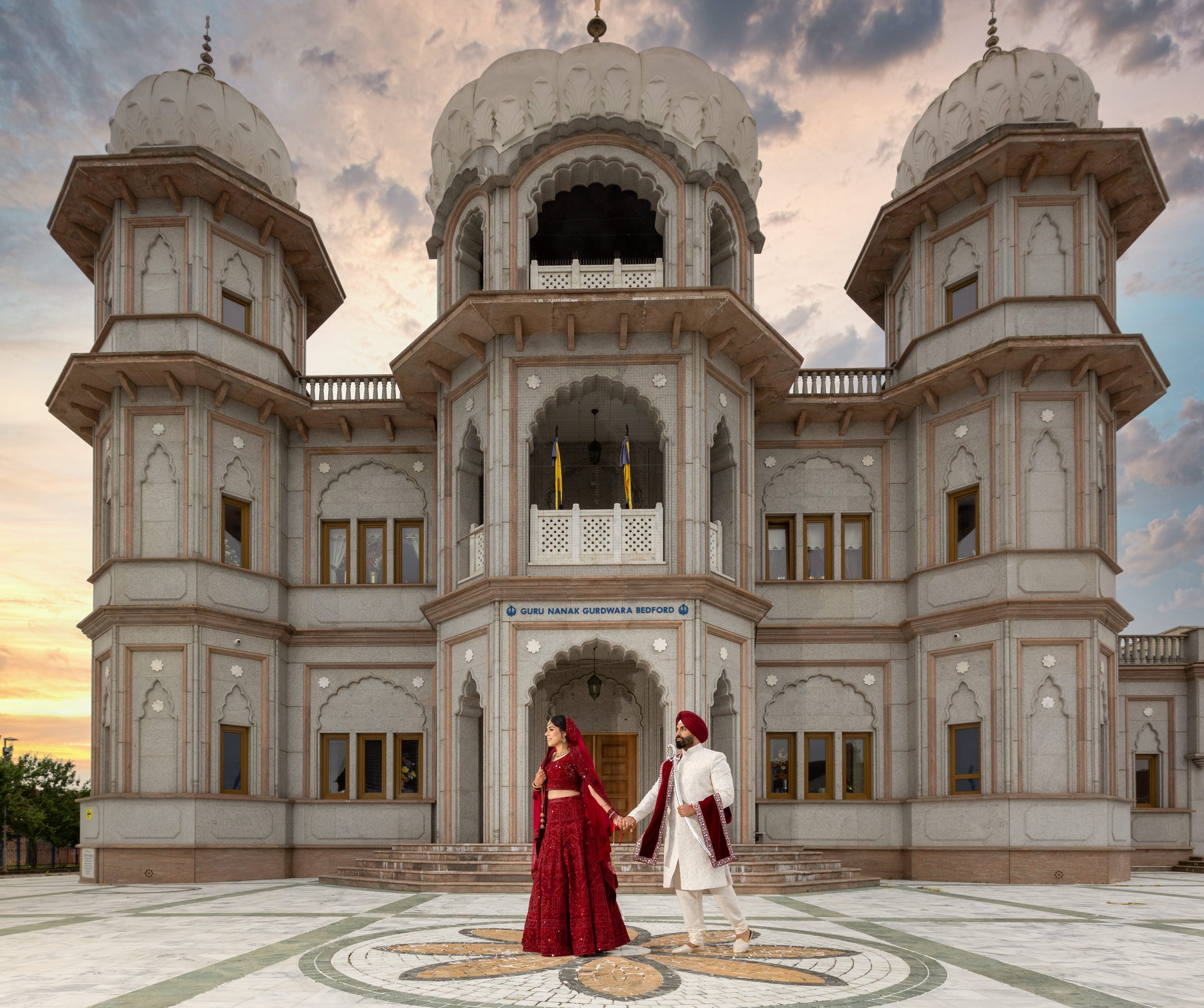
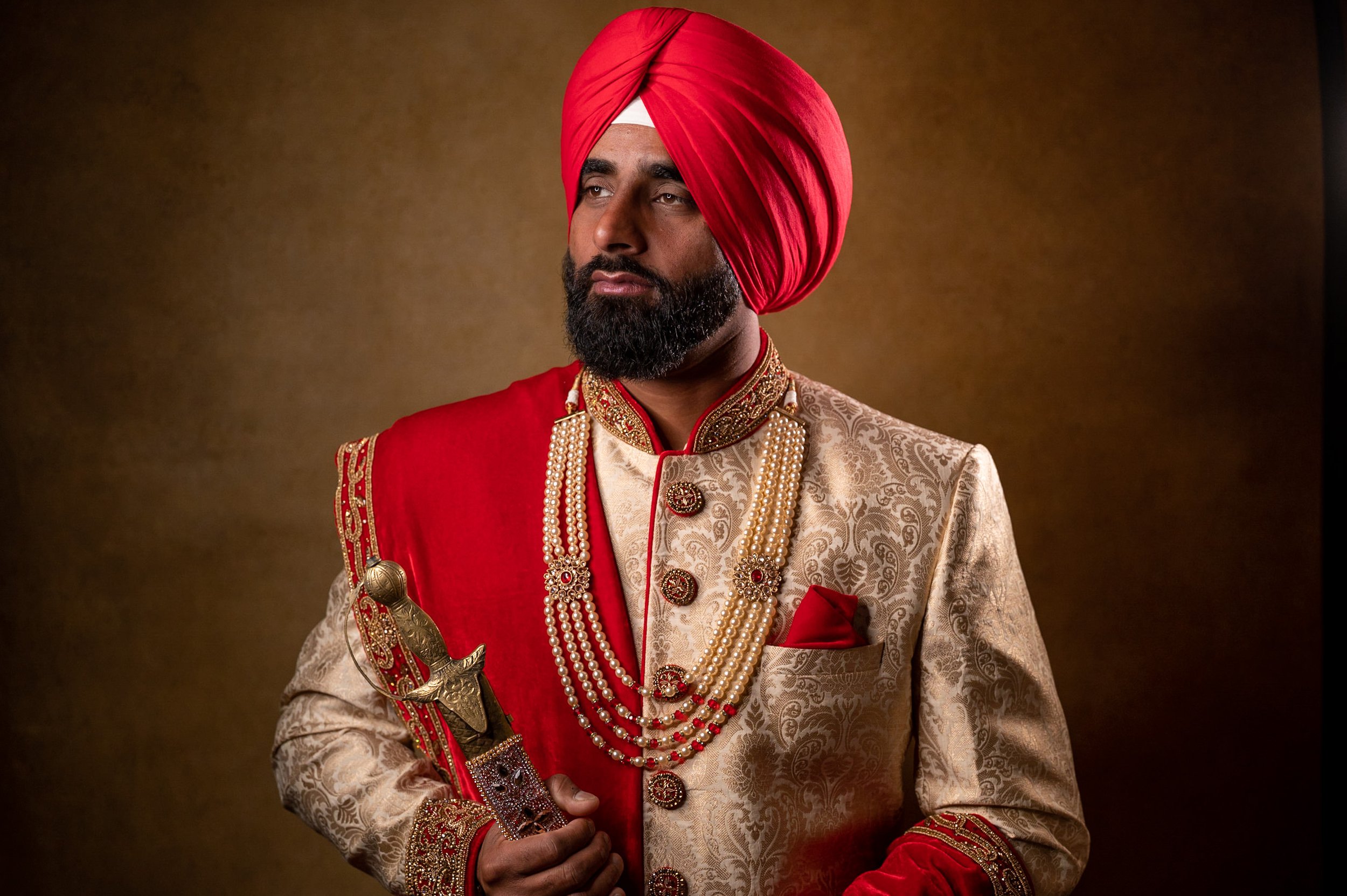
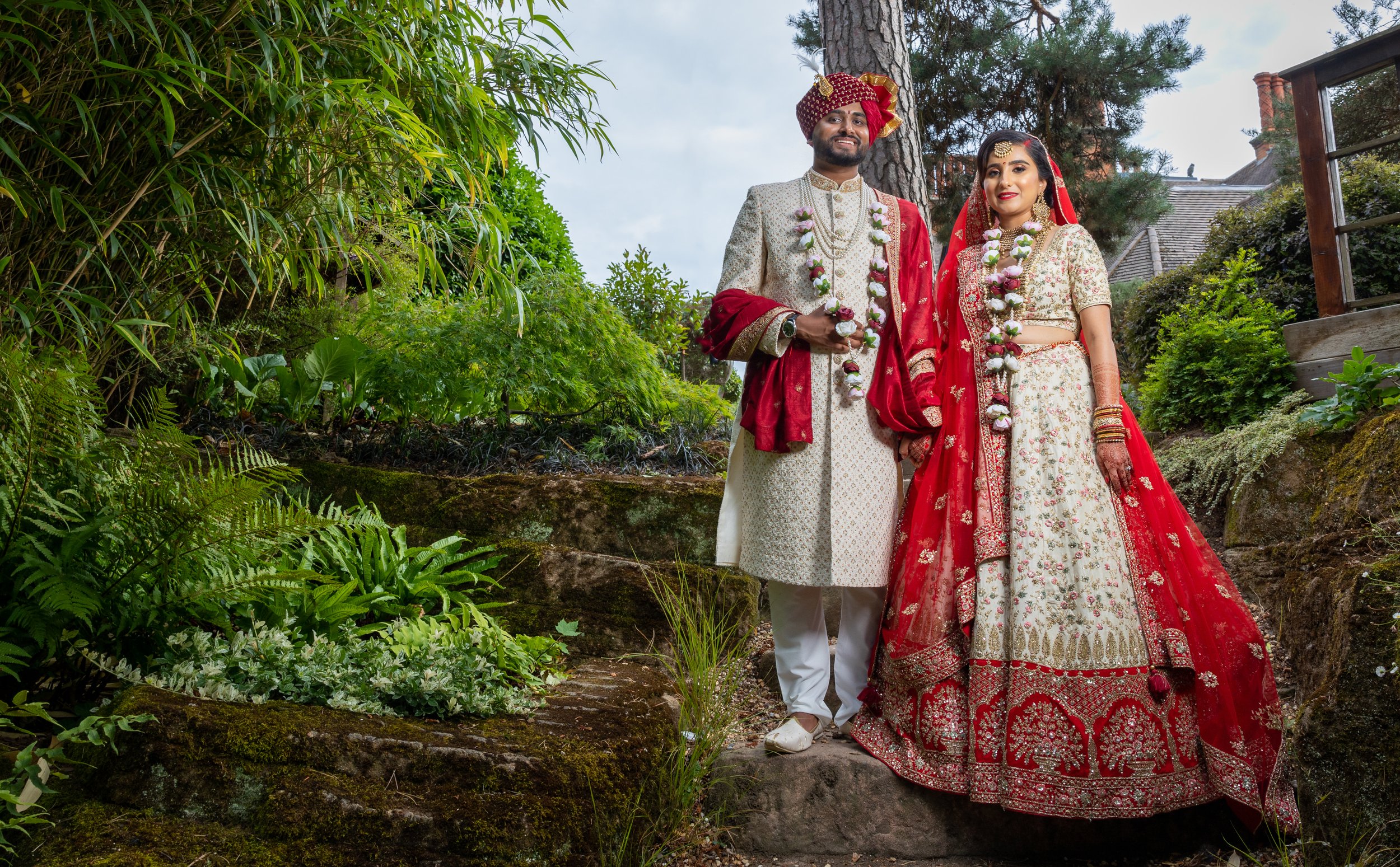
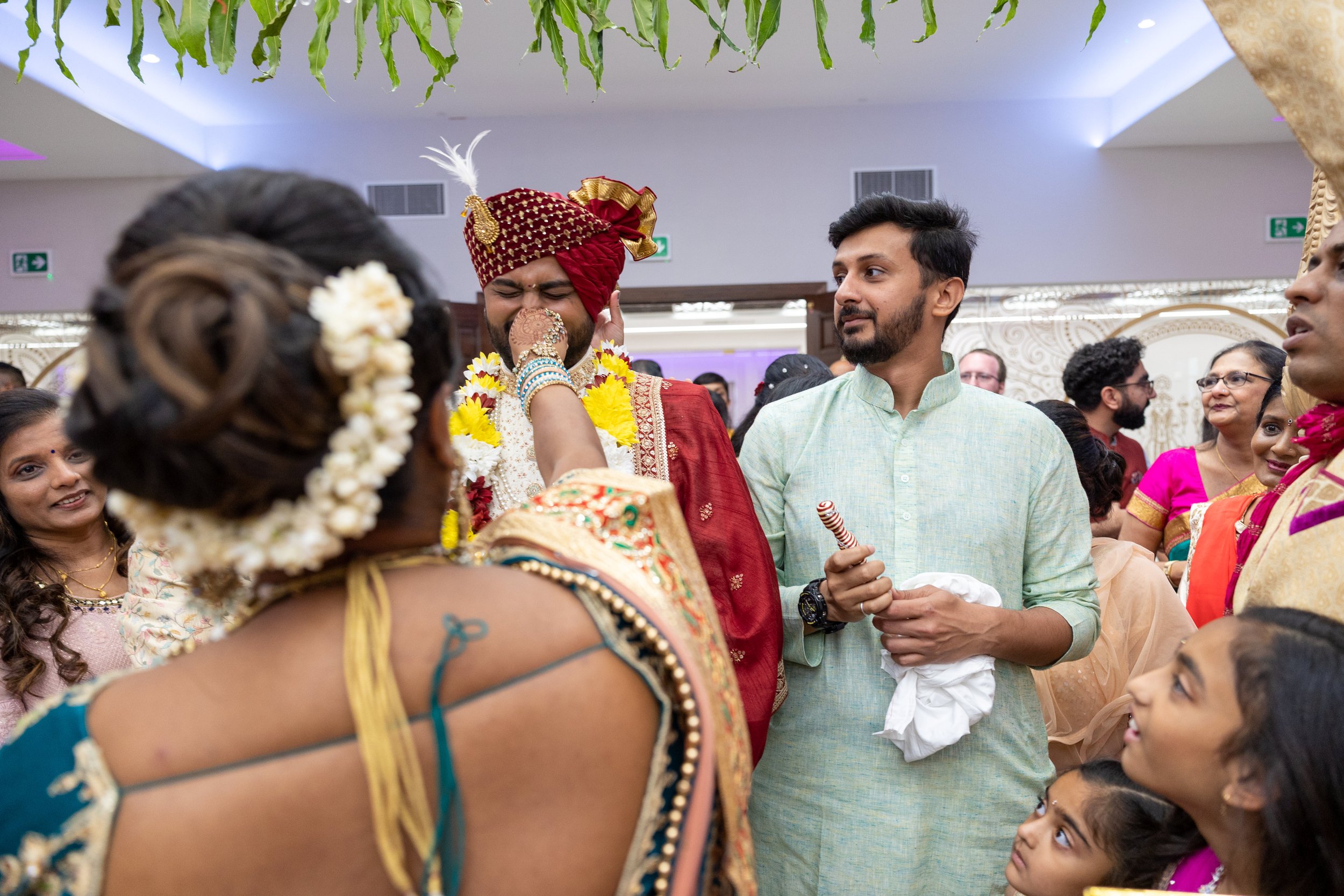

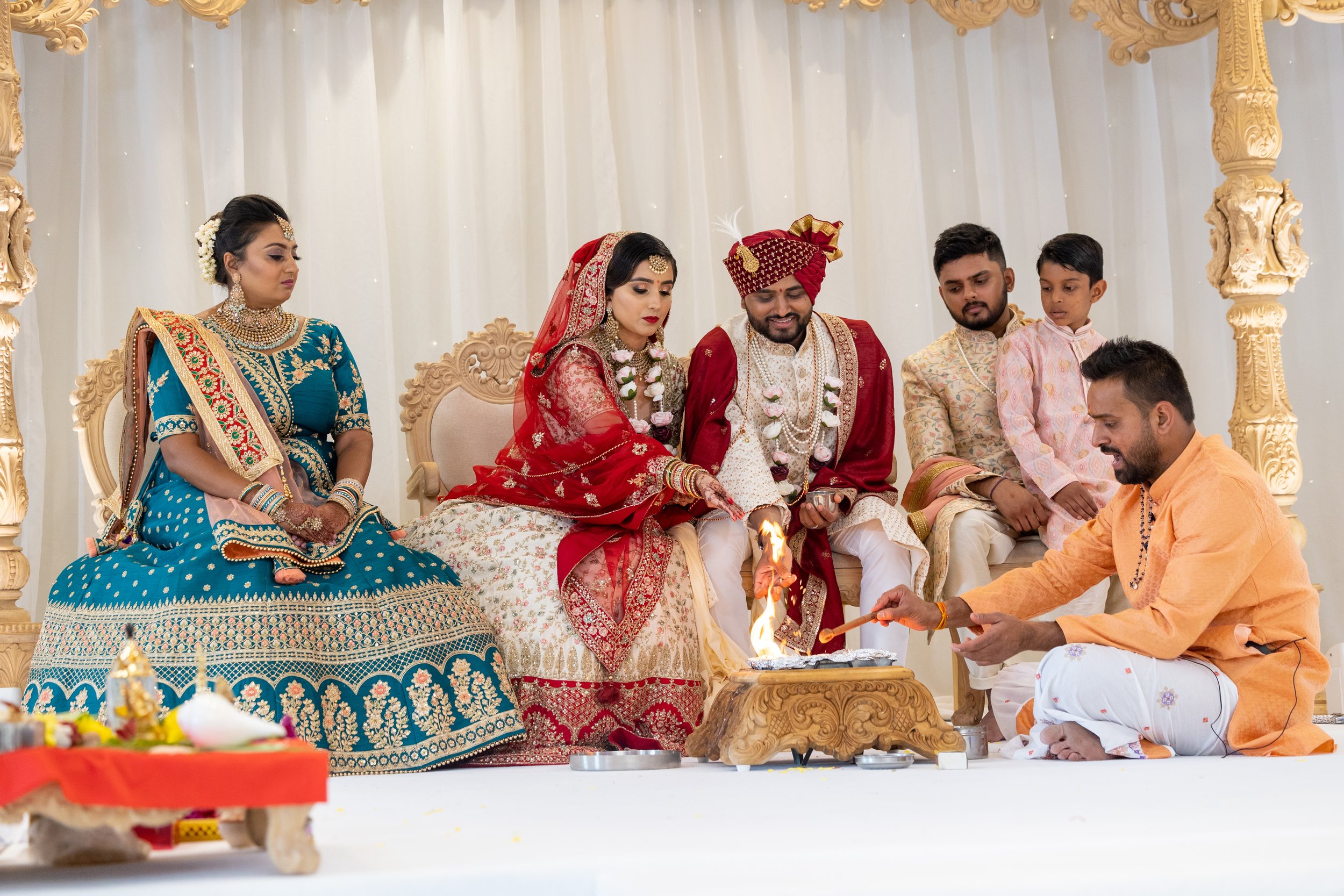
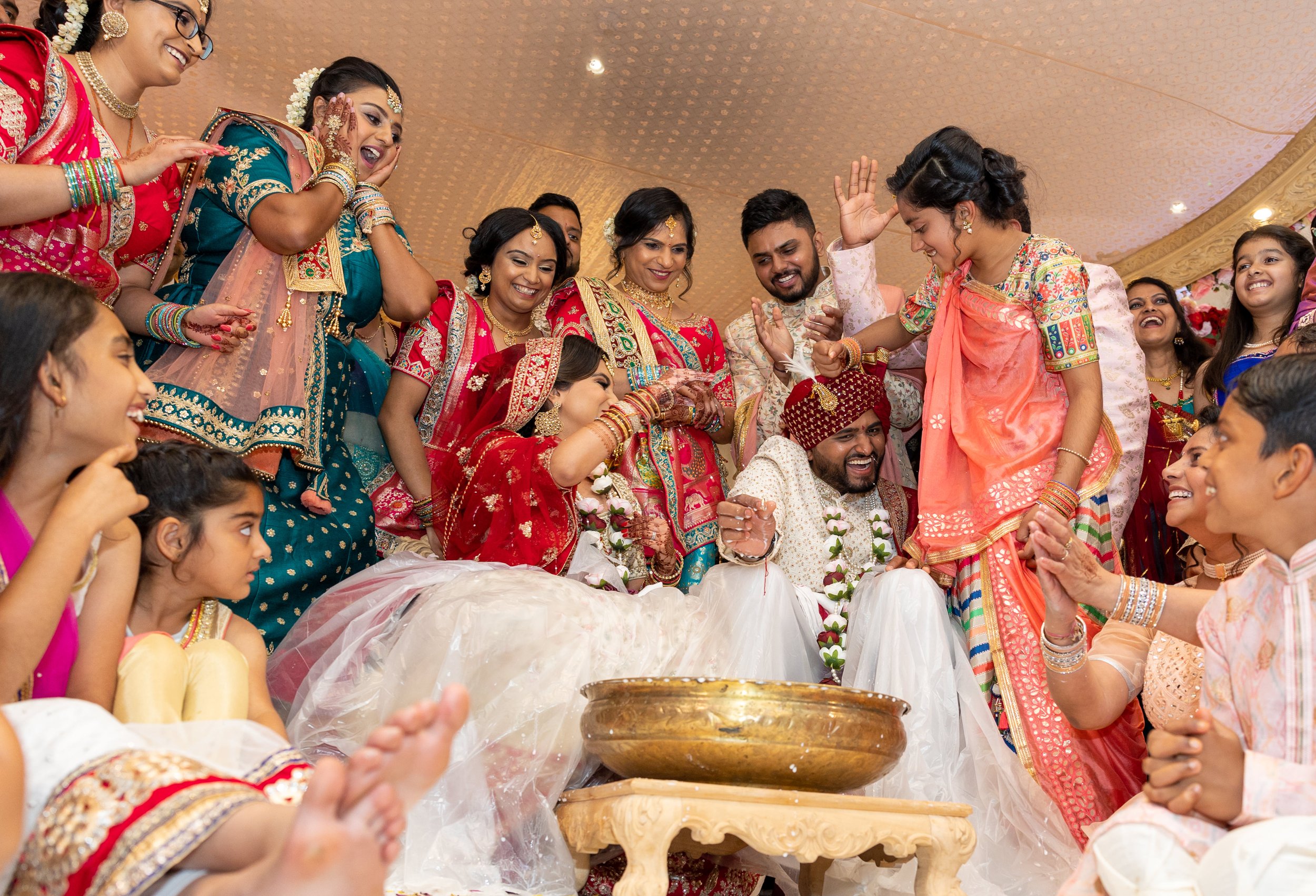
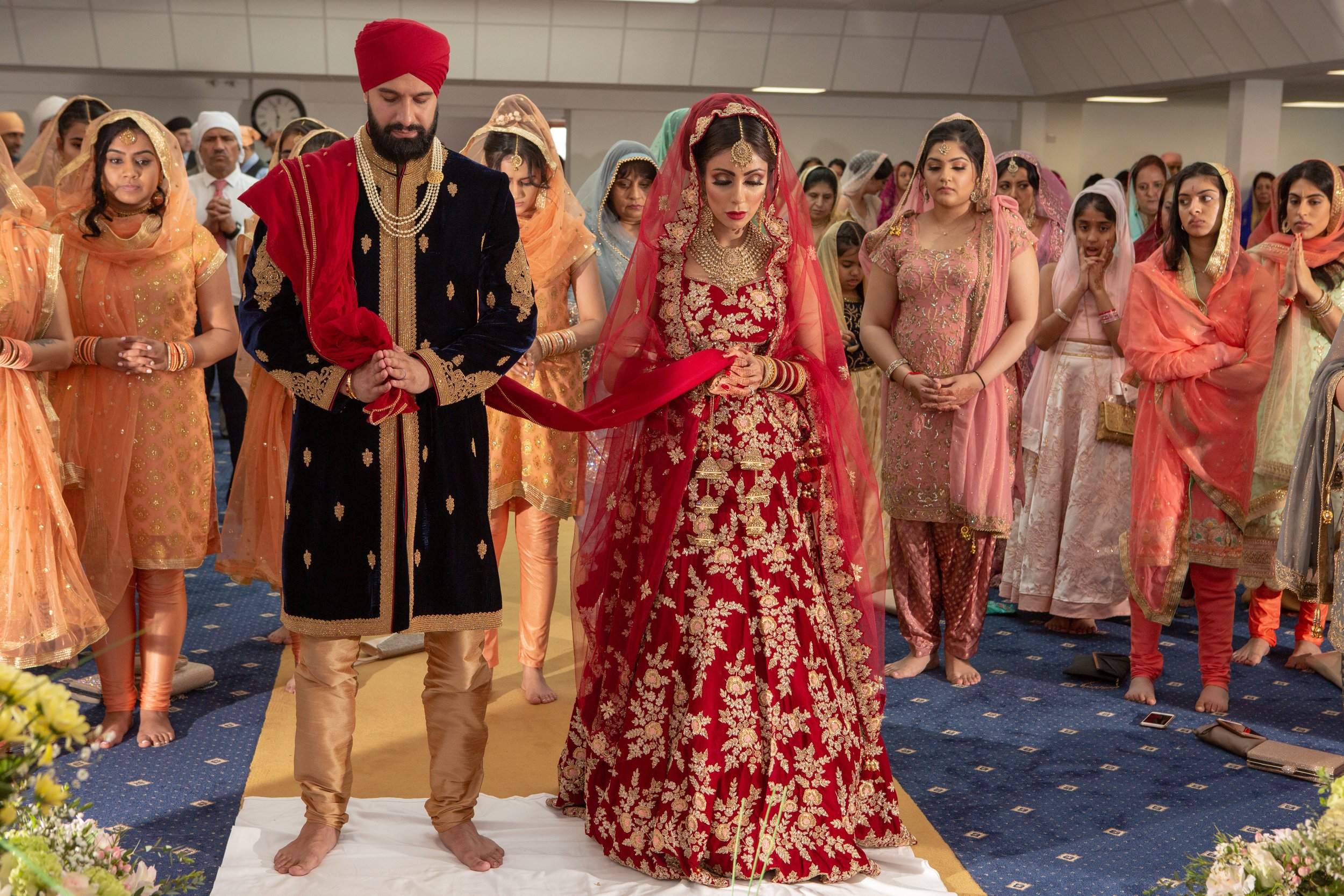

Popular Gujarati Ceremonies conducted during a Hindu Wedding
Chandlo Matli
The wedding preparations kick off with the Chandlo Matli ceremony, a momentous occasion where the father of the bride, accompanied by four male family members, visits the groom's home. As a symbol of blessings and good fortune, a red circle (Chandlo) made of vermillion is applied to the groom's forehead. During this ceremony, the groom is offered Shagun, a token gift, as a gesture of acceptance and goodwill.
Gol Dhana
The Coriander Seeds and Jaggery Ceremony Gol Dhana, similar to an engagement ceremony, takes place a few days before the wedding. The bride's family visits the groom's family, bearing traditional matlis filled with sweets and savouries. The exchange of rings between the bride and groom is accompanied by blessings from married women of both families, who pray for their happiness and prosperous married life.
Mandap Mahurat
Commencing the Sacred Union The Mandap Mahurat marks the official initiation of the wedding ceremony. It is performed separately at the bride's and groom's places. A priest conducts a puja, invoking Lord Ganesh's blessings to remove any obstacles that may hinder the couple's journey towards marital bliss.
Griha Shanti
Seeking Celestial Harmony To ensure a harmonious and obstacle-free union, the Griha Shanti ceremony is performed. The priest performs prayers and appeasements to the deities, seeking their assistance in resolving any planetary conflicts indicated by the couple's horoscopes. The divine blessings are sought to foster a smooth and prosperous conjugal life.
Mehndi
An Artistic Expression Two days before the wedding, the Mehndi ceremony takes place, where henna paste is applied to the bride's hands and feet, adorned with intricate patterns. The design often incorporates the groom's initials, signifying their eternal bond. Female family members also participate, getting their hands and feet painted with henna. The joyous atmosphere is further enhanced by melodious wedding songs sung by women.
Sangeet Sandhya
An Evening of Music and Dance The Sangeet Sandhya is a joyous pre-wedding celebration held in the evening before the wedding day. Both the bride's and groom's families come together at a common venue to showcase their musical and dancing talents. Traditional Raas and Dandiya dances fill the air with exuberance as the families bond and forge new relationships.
Pithi
The Beautification Ceremony The Pithi ceremony, held separately at the bride's and groom's places, involves the application of a paste made from turmeric, sandalwood, rosewater, herbs, and fragrant mogra attar. The bride or groom sits on a low stool while family members lovingly apply the paste to their face, hands, and feet, symbolizing purification and beautification. The paste is prepared by the bride's or groom's paternal uncle's wife, adding a personal touch to the ritual.
Mameru or Mosalu
Bestowing Blessings and Gifts Mameru or Mosalu is an event where the groom's maternal uncle, accompanied by his wife and the bride's maternal aunt's husband, visits the bride's house. They present her with traditional gifts like Paanetar Saree, Jewellery, Wedding Bangles or Chooda made from ivory, as well as sweets and dry fruits, beautifully wrapped in boxes. This heartfelt gesture signifies the groom's family's acceptance of the bride into their fold and the beginning of a new familial bond.
Jaan
Warding Off Evil The Jaan ritual is a fascinating custom aimed at warding off any evil influences. The groom visits the bride's residence, where he seeks blessings by touching his mother-in-law's feet. This act symbolizes respect, love, and the groom's commitment to protect and care for his new bride.
Varghodo
The Grand Procession Varghodo is the grand wedding procession where the groom travels to the bride's house. Accompanied by his relatives, he arrives on a beautifully adorned horse, while music and dance fill the air. The jubilant atmosphere is enhanced by the crackling of fireworks and the joyous cheers of the gathered crowd.
Ponkvu
A Warm Welcome Upon the groom's arrival at the bride's house, the Ponkvu ceremony takes place. The bride's mother, along with the bridal party, welcomes the groom with an Aarti, a ritual of waving a lamp, followed by applying a tika on his forehead. In a playful act, the mother-in-law playfully tries to grab the groom's nose, symbolizing a lighthearted initiation into the family.
Jaimala
Formal Introduction During the Jaimala ceremony, the bride and groom are formally introduced to each other. They exchange garlands, signifying their acceptance of one another. The first round is performed with the groom standing on a stool, symbolizing his elevated position. In the second round, they stand on equal ground, representing equality and harmony in their union.
Madhuparka
An Auspicious Welcome Following the Jaimala, the groom is led to the wedding mandap by his mother-in-law. As a gesture of hospitality and respect, his feet are washed with a mixture of milk and water. The groom is then offered a drink known as Panchamrut, containing five sacred ingredients: milk, yogurt, ghee, honey, and sugar. During this time, the mischievous sisters of the bride attempt to steal the groom's shoes, adding a playful element to the ceremony.
Antarpaat
Symbolic Separation As the bride makes her way to the wedding mandap, she is accompanied by her maternal uncle. An opaque cloth, known as Antarpaat, is placed between the bride and groom, symbolically separating them. This signifies their individuality before they unite in marriage, building anticipation and excitement for the upcoming rituals.
Kanya Daan
Entrusting Happiness The Kanya Daan ceremony holds immense emotional significance as the bride's father washes the groom's feet, symbolizing his reverence and acceptance. He then places his daughter's hands into the groom's, entrusting her happiness and well-being to him. This heartfelt gesture signifies the sacred bond of trust and the beginning of the couple's journey together.
Hasta Milap
Union of Souls During the Hasta Milap ceremony, the priest unites the groom's shawl and the end of the bride's saree while chanting sacred verses. This act represents the joining of their souls and the sacred union of marriage. The couple's joined hands, known as Hasta Milap, signify their commitment, support, and shared aspirations.
Mangal Pheras
Circles of Sacred Commitment In the Mangal Pheras ceremony, the bride and groom, with their garments tied together, make four circles around the sacred fire. Each circle represents one of the four essential goals of human life:
Dharma (righteousness),
Artha (prosperity),
Kama (love and passion),
and Moksha (spiritual liberation).
As they complete each round, they make vows and promises to each other, expressing their commitment to support and cherish one another throughout their lives.
Saptapadi
Seven Sacred Steps The Saptapadi ceremony is the culmination of the wedding rituals, where the couple takes seven steps together around the sacred fire. With each step, they recite vows and promises, symbolizing their mutual understanding, love, and shared responsibilities. These seven steps signify the beginning of their journey as life partners, bound by the sacred bonds of marriage.
Saubhagyavati Bhava
Seeking Marital Bliss As the wedding ceremony nears its conclusion, the bride seeks blessings from the married women present. They offer their good wishes, showering her with rice and flower petals, symbolizing fertility, prosperity, and marital bliss. This gesture is believed to bestow the bride with the blessings of a happy and fulfilling married life.
Vidaai
Emotional Farewell Vidaai is an emotionally charged moment when the bride bids farewell to her family and childhood home. As she leaves for her new life with her husband, her parents and family members shower her with blessings and tears of joy mixed with sorrow. It is a poignant and heartfelt farewell, symbolizing the bride's transition into her new role as a wife.
Wedding Reception
Celebrating the Union Following the wedding ceremony, a grand reception is held where family, friends, and well-wishers come together to celebrate the union of the newlywed couple. The event is filled with music, dance performances, delicious food, and joyful festivities. It provides an opportunity for both families to mingle and share in the joy of the couple's union.
Gujarati wedding are a beautiful amalgamation of age-old traditions, vibrant rituals, and heartfelt emotions. From the auspicious Chandlo Matli to the grand reception, each ceremony holds its own significance and adds to the overall charm and grandeur of a Gujarati wedding. These ceremonies not only unite the couple but also bring together two families, forging lifelong bonds and creating memories that will be cherished for generations to come. The rich cultural heritage and deep-rooted traditions make Gujarati weddings a truly enchanting experience, filled with love, joy, and the celebration of a sacred union.
Gujarati weddings are a vibrant tapestry of traditions, and capturing the essence of these beautiful ceremonies requires the skilled eye of a Gujarati Wedding Photographer. With their expertise in capturing the intricate details, emotions, and cultural significance of each ritual, a Gujarati Wedding Photographer ensures that every cherished moment is preserved for a lifetime. From the joyful henna application during the Mehndi ceremony to the emotional Vidaai farewell, a skilled photographer captures the essence of Gujarati wedding celebrations, creating a visual narrative that allows couples to relive their special day for years to come.
FAQ - Exploring Wedding Ceremonies for Gujaratis
1. What are wedding ceremonies in known for?
Gujarati weddings are renowned for their rich traditions, vibrant celebrations, and intricate ceremonies. Each ritual holds deep cultural significance, symbolizing the union of two families and the beginning of a new chapter in the lives of the bride and groom.
2. What is the significance of the Chandlo Matli ceremony?
The Chandlo Matli ceremony marks the beginning of the wedding preparations. The father of the bride, accompanied by four male family members, visits the groom's home and applies a red circle (Chandlo) made of vermillion on the groom's forehead, symbolizing blessings and good fortune.
3. What happens during the Gol Dhana ceremony?
Gol Dhana, similar to an engagement ceremony, takes place before the wedding. The bride's family visits the groom's family with traditional matlis filled with sweets and savories. The exchange of rings between the bride and groom is accompanied by blessings from married women of both families.
4. What is the significance of the Mandap Mahurat?
The Mandap Mahurat marks the official initiation of the wedding ceremony. It is performed separately at the bride's and groom's places, where a priest conducts a puja, invoking Lord Ganesha's blessings to remove any obstacles on the couple's journey towards marital bliss.
5. What is the purpose of the Griha Shanti ceremony?
The Griha Shanti ceremony is performed to ensure a harmonious and obstacle-free union. The priest performs prayers and appeasements to the deities, seeking their assistance in resolving any planetary conflicts indicated by the couple's horoscopes.
6. What happens during the Mehendi ceremony?
The Mehendi ceremony takes place two days before the wedding, where henna paste is applied to the bride's hands and feet, adorned with intricate patterns. The design often incorporates the groom's initials, signifying their eternal bond.
7. What takes place during the Sangeet Sandhya celebration?
The Sangeet Sandhya is a joyous pre-wedding celebration held in the evening before the wedding day. Both the bride's and groom's families come together to showcase their musical and dancing talents, fostering new relationships and bonding between the families.
8. What is the significance of the Pithi ceremony?
The Pithi ceremony involves the application of a paste made from turmeric, sandalwood, rosewater, herbs, and fragrant mogra attar to the bride or groom's face, hands, and feet. This symbolizes purification and beautification and adds a personal touch to the ritual.
9. What is the purpose of the Mameru or Mosalu event?
Mameru or Mosalu is when the groom's maternal uncle, accompanied by his wife and the bride's maternal aunt's husband, visits the bride's house. They present her with traditional gifts, symbolizing the groom's family's acceptance of the bride into their fold and the beginning of a new familial bond.
10. What does the Jaan ritual entail?
The Jaan ritual is a fascinating custom where the groom seeks blessings by touching his mother-in-law's feet atthe bride's residence, symbolizing respect, love, and commitment to protect and care for his new bride.
11. What happens during the Varghodo procession?
The Varghodo is the grand wedding procession where the groom travels to the bride's house, accompanied by his relatives, while music and dance fill the air, creating a jubilant atmosphere.
12. What is the significance of the Ponkvu ceremony?
Upon the groom's arrival at the bride's house, the Ponkvu ceremony takes place. The bride's mother, along with the bridal party, welcomes the groom with an Aarti and playfully attempts to grab the groom's nose, symbolizing a lighthearted initiation into the family.
13. What takes place during the Jaimala ceremony?
During the Jaimala ceremony, the bride and groom are formally introduced to each other and exchange garlands, signifying their acceptance of one another.
14. What happens during the Madhuparka ceremony?
Following the Jaimala, the groom's feet are washed with a mixture of milk and water, and he is offered a drink known as Panchamrut. Meanwhile, the mischievous sisters of the bride attempt to steal the groom's shoes, adding a playful element to the ceremony.
15. What is the significance of the Antarpaat ceremony?
The Antarpaat ceremony symbolically separates the bride and groom before they unite in marriage, building anticipation and excitement for the upcoming rituals.
16. What happens during the Kanya Daan ceremony?
The Kanya Daan ceremony holds immense emotional significance as the bride's father washes the groom's feet, entrusting her happiness and well-being to him, symbolizing the sacred bond of trust and the beginning of the couple's journey together.
17. What is the purpose of the Hasta Milap ceremony?
During the Hasta Milap ceremony, the priest unites the groom's shawl and the end of the bride's saree while chanting sacred verses, representing the joining of their souls and the sacred union of marriage.
18. What happens during the Mangal Pheras ceremony?
In the Mangal Pheras ceremony, the bride and groom, with their garments tied together, make four circles around the sacred fire, expressing their commitment to support and cherish one another throughout their lives.
19. What is the significance of the Saptapadi ceremony?
The Saptapadi ceremony is the culmination of the wedding rituals, where the couple takes seven steps together around the sacred fire, symbolizing their mutual understanding, love, and shared responsibilities.
20. What happens during the emotional Vidaai farewell?
Vidaai is a poignant moment when the bride bids farewell to her family and childhood home, symbolizing her transition into her new role as a wife.
21. How is the wedding union celebrated at the reception?
Following the wedding ceremony, a grand reception is held to celebrate the union of the newlywed couple, filled with music, dance performances, delicious food, and joyful festivities.
We hope this FAQ has provided you with a comprehensive understanding of the enchanting Gujarati weddings. If you have any further questions or would like to inquire about our services for your wedding, feel free to contact photosbyKISHEN. We would be honoured to be a part of your special day and capture the essence of these beautiful traditions.
Client testomonials:
“If you want a stress free experience for your big day, then you should definitely book Kishen!”
If you want a stress free experience for your big day, then you should definitely book Kishen!
Kishen is knowledgeable and outstanding for photography. He goes above and beyond to make your event joyful and memorable. He’s definitely one of the best in the business, I am glad I booked him for our wedding (pre-wedding shoot, civil ceremony, reception and traditional Hindu wedding). Thank you all for your hard work and a special shout out for his wife, Shanti, for her guidance throughout the events and for being you!
Everybody complemented your work and your professionalism. Wish you all the very best!
Roshni & Vineet
“Kishen’s become part of our family, he knew exactly what we wanted.”
Kishen has been an absolute star throughout our journey! He knew exactly what we wanted and delivered beyond our expectation. Communication has been excellent throughout. Kishen and his wife, gave us directions as well as understanding what we wanted. Honestly it feels like he’s become part of our family more than just a client and that's what you need when your looking for a photographer. highly recommended if you need a photographer. We for sure will definitely use him for any future events and recommend him to our extended families!
Nik & Sapna
“Kishen is the photographer you want for your big day!”
Kishen was personable, very professional, and honestly he became part of the best day of my life in that he really captured beyond the classic wedding shots the entire day and everyone in my family and friends who were there to enjoy it with us. He also made me feel so calm, confident and comfortable as a bride. I am so grateful for his sincerity, his artistic and creative approaches and above that I was lucky to be referred him by my sister - on this note, without reservation, Kishen is the photographer you want for your big day!
Sam & Fahema
Contact Kishen for you Gujarati Wedding Photography!
If you have any questions that are not answered on my website or would like to inquire about my availability for your wedding, this is the place to contact me.
Phone: 07766 862233
Messages are usually responded to within 24 hours.
If you haven't heard back by then, please check your junk mail folder, as email replies are sometimes sent there by mistake. Alternatively, leave your phone number so I can confirm receipt of your message and notify you that an email response has been sent.
photos by KISHEN | ASIAN WEDDING PHOTOGRAPHER LONDON | WEDDING PHOTOGRAPHERS NEAR ME | WEDDING PHOTOGRAPHER IN LONDON | LONDON WEDDING PHOTOGRAPHERS | ASIAN WEDDING PHOTOGRAPHER IN HARROW | ASIAN WEDDING PHOTOGRAPHER IN WATFORD | Asian Wedding Photography | Indian Wedding Photography | Indian Wedding Photographer | Hindu Wedding Photographer | LUXURY Wedding Photography | Sikh Wedding Photography | Tamil Wedding Photographer | DESTINATION WEDDING PHOTOGRAPHER
photos by KISHEN
Award winning London Wedding Photographer
info@photosbykishen.co.uk
Tel: 07766 862233







